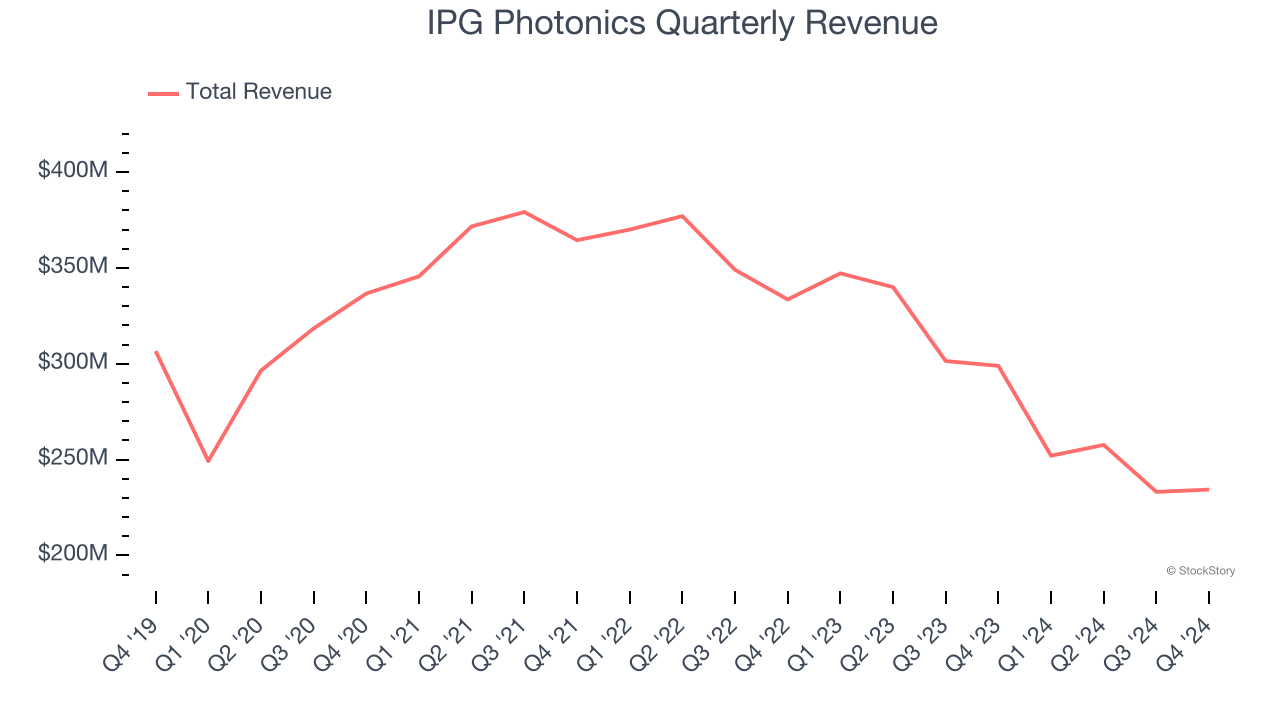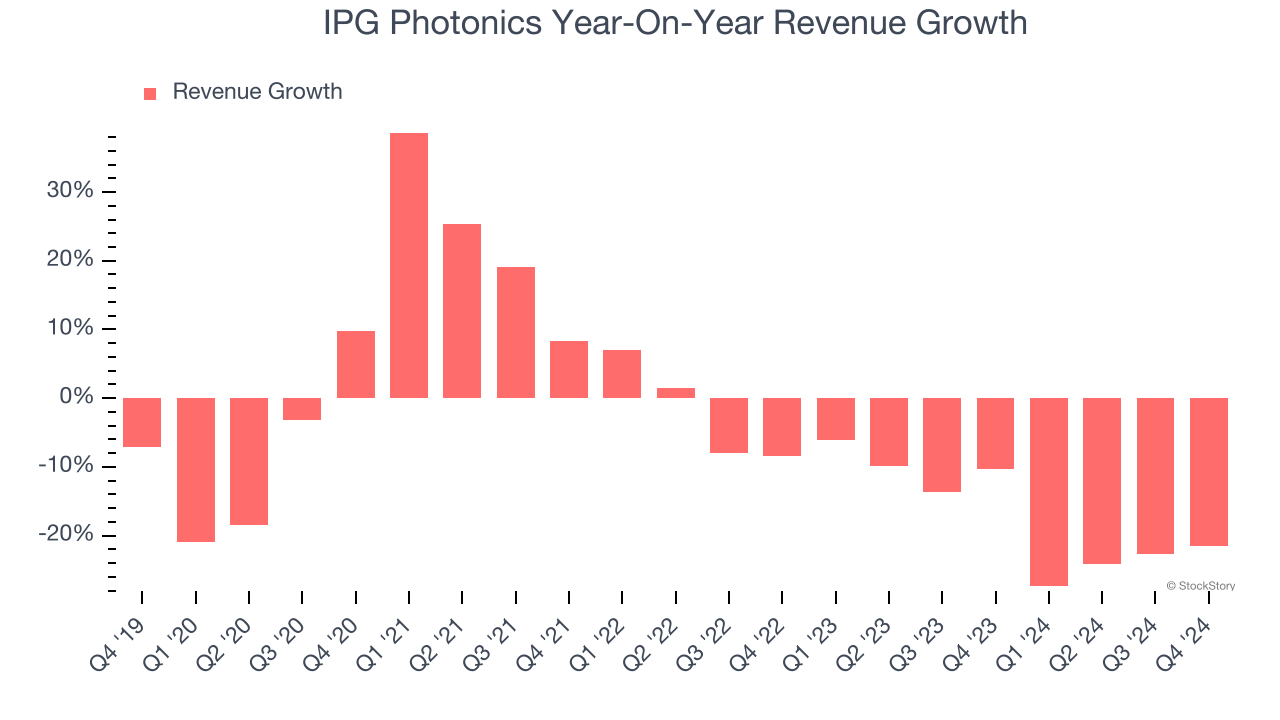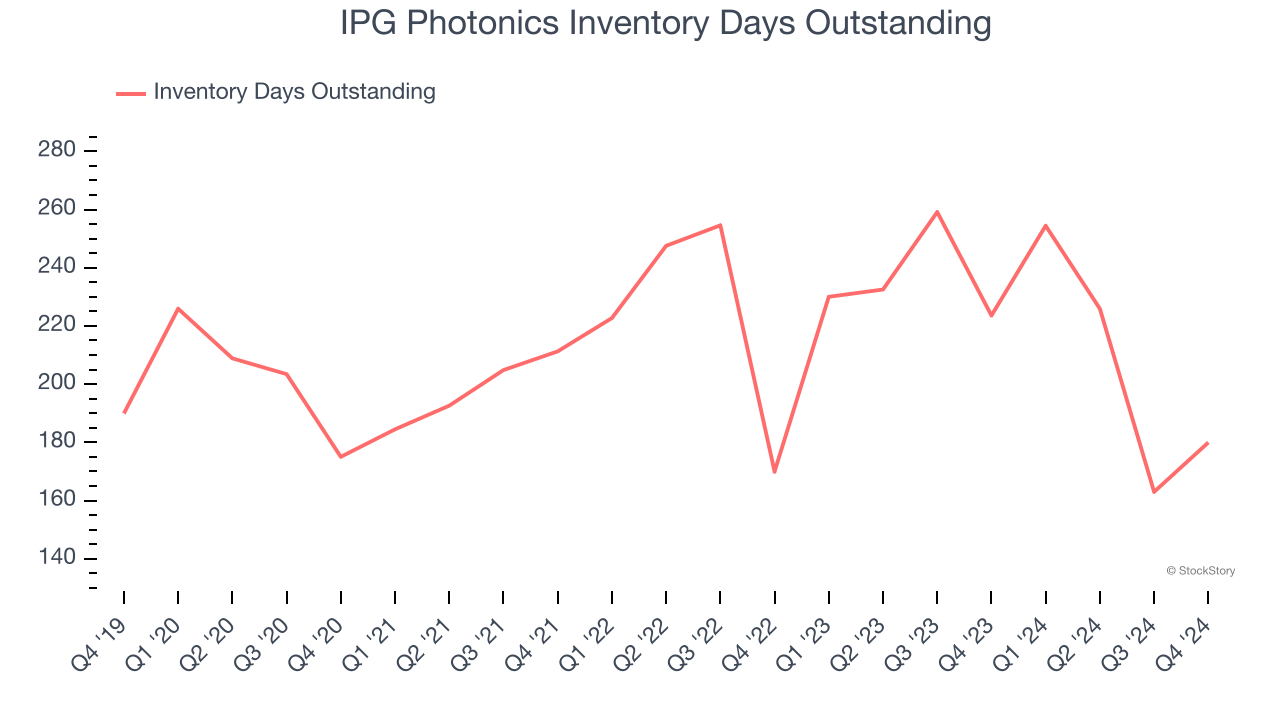
Fiber laser manufacturer IPG Photonics (NASDAQ: IPGP) reported revenue ahead of Wall Street’s expectations in Q4 CY2024, but sales fell by 21.6% year on year to $234.3 million. On the other hand, next quarter’s revenue guidance of $225 million was less impressive, coming in 3.8% below analysts’ estimates. Its GAAP profit of $0.18 per share was 11.3% below analysts’ consensus estimates.
Is now the time to buy IPG Photonics? Find out by accessing our full research report, it’s free.
IPG Photonics (IPGP) Q4 CY2024 Highlights:
- Revenue: $234.3 million vs analyst estimates of $226.6 million (21.6% year-on-year decline, 3.4% beat)
- EPS (GAAP): $0.18 vs analyst expectations of $0.20 (11.3% miss)
- Adjusted EBITDA: $28.77 million vs analyst estimates of $15.29 million (12.3% margin, 88.2% beat)
- Revenue Guidance for Q1 CY2025 is $225 million at the midpoint, below analyst estimates of $233.9 million
- EBITDA guidance for Q1 CY2025 is $27 million at the midpoint, below analyst estimates of $27.75 million
- Operating Margin: 6%, down from 9.6% in the same quarter last year
- Free Cash Flow Margin: 21.6%, down from 27% in the same quarter last year
- Inventory Days Outstanding: 180, up from 163 in the previous quarter
- Market Capitalization: $2.91 billion
Company Overview
Both a designer and manufacturer of its products, IPG Photonics (NASDAQ: IPGP) is a provider of high-performance fiber lasers used for cutting, welding, and processing raw materials.
Semiconductor Manufacturing
The semiconductor industry is driven by demand for advanced electronic products like smartphones, PCs, servers, and data storage. The need for technologies like artificial intelligence, 5G networks, and smart cars is also creating the next wave of growth for the industry. Keeping up with this dynamism requires new tools that can design, fabricate, and test chips at ever smaller sizes and more complex architectures, creating a dire need for semiconductor capital manufacturing equipment.
Sales Growth
Reviewing a company’s long-term sales performance reveals insights into its quality. Any business can have short-term success, but a top-tier one grows for years. Over the last five years, IPG Photonics’s demand was weak and its revenue declined by 5.8% per year. This fell short of our benchmarks and is a sign of poor business quality. Semiconductors are a cyclical industry, and long-term investors should be prepared for periods of high growth followed by periods of revenue contractions.

Long-term growth is the most important, but short-term results matter for semiconductors because the rapid pace of technological innovation (Moore's Law) could make yesterday's hit product obsolete today. IPG Photonics’s recent history shows its demand has stayed suppressed as its revenue has declined by 17.3% annually over the last two years. 
This quarter, IPG Photonics’s revenue fell by 21.6% year on year to $234.3 million but beat Wall Street’s estimates by 3.4%. Company management is currently guiding for a 10.7% year-on-year decline in sales next quarter.
Looking further ahead, sell-side analysts expect revenue to grow 3.5% over the next 12 months. While this projection suggests its newer products and services will catalyze better top-line performance, it is still below the sector average.
Unless you’ve been living under a rock, it should be obvious by now that generative AI is going to have a huge impact on how large corporations do business. While Nvidia and AMD are trading close to all-time highs, we prefer a lesser-known (but still profitable) stock benefiting from the rise of AI. Click here to access our free report one of our favorites growth stories.
Product Demand & Outstanding Inventory
Days Inventory Outstanding (DIO) is an important metric for chipmakers, as it reflects a business’ capital intensity and the cyclical nature of semiconductor supply and demand. In a tight supply environment, inventories tend to be stable, allowing chipmakers to exert pricing power. Steadily increasing DIO can be a warning sign that demand is weak, and if inventories continue to rise, the company may have to downsize production.
This quarter, IPG Photonics’s DIO came in at 180, which is 34 days below its five-year average. These numbers show that despite the recent increase, there’s no indication of an excessive inventory buildup.

Key Takeaways from IPG Photonics’s Q4 Results
It was encouraging to see IPG Photonics beat analysts’ revenue and EBITDA expectations this quarter. On the other hand, its revenue and EBITDA guidance for next quarter missed. Overall, this was a softer quarter due to the outlook, but the market seemed to weigh the current results more. The stock traded up 4.7% to $70.50 immediately after reporting.
Is IPG Photonics an attractive investment opportunity right now? If you’re making that decision, you should consider the bigger picture of valuation, business qualities, as well as the latest earnings. We cover that in our actionable full research report which you can read here, it’s free.






